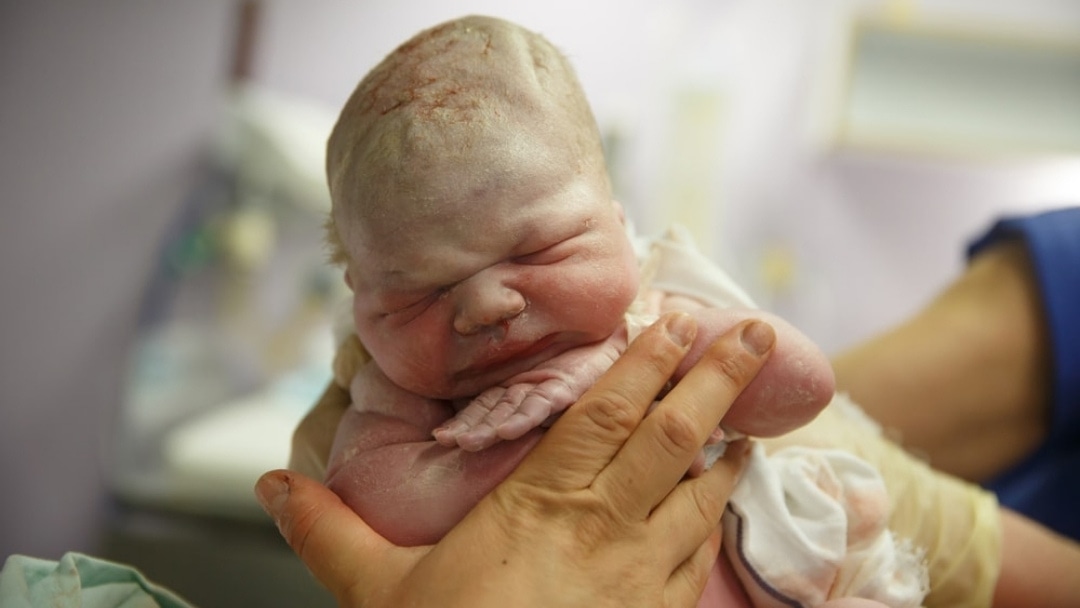
I want it to be able to say something profound about women and motherhood. I want to give the series, which has some good elements amid messy episodes, the benefit of the doubt. There was a way to actually make these scenes as empowering and feminist as the writers seem to believe they are.
#BIRTH TRAUMA SERIES#
Shortly before she is seen half-naked, cut open and bleeding in the series premiere, Aemma tells her daughter that for women, "the birthing bed is our battlefield." Heavy-handed as that dialogue is, it points to the fact that there are more nuanced and important things "Dragon" could have said about birth. The violence of Aemma's birth is over the top, almost cartoonish. When Laena kills herself during a labor that isn't going well, it sends the message that women would rather die than fail to give birth, and take their unborn baby with them.

It doesn't feel like Rhaenyra bleeding all over the palace floor or leaking breast milk in a small council meeting is anything but a gratuitous use of her body for drama. These portrayals are important. When people see just how hard the work of motherhood is, it can change the perception of parenting in the real world.īut in "Dragon," the births just hit the wrong note. PBS' "Call the Midwife," a series all about birth, is one. CW's "Jane the Virgin" offered a realistic take on postpartum life, from adult diapers to lack of showers. When I think of pop culture that can capture what it's really like to birth and care for a newborn, the list is desperately short. When series are realistic about birth and infant care and motherhood, it can be a radical act. has a very high maternal mortality rate among developed countries, and the risks of pregnancy and birth increase dramatically if the mother is Black).

It's long and sometimes boring, and it smells and it is often traumatic and dangerous. You think of doctors that are present at all times and someone shouting "push, push, push!" for 30 seconds and then a smiling baby pops out covered in raspberry jam. When you think of famous birth scenes, you think of Phoebe on "Friends" shooting out triplets without much issue. Pop culture in general has long shied away from what childbirth is really like. The "Dragon" creators deserve a small amount of credit for trying something here. The sequences felt like they were there for shock and awe, not for thematic or character reasons. So was the pain and trauma of the woman, not realism or the experience of the mother. As I watched each birth unfold, I was instantly reminded of the worst of the rape scenes on "Thrones." The spectacle of the violence was the focal point. More: 'Game of Thrones' never fixed its problem with womenĪs a woman who recently gave birth and has talked to others who have seen these episodes, my feedback is less than positive. Sapochnik also told the Times that midwives were consulted before filming Aemma's scene, and that he received "positive" feedback from other women. is to shine a light on how the experience of men and women in this world has parallels to our own past and present.” “Each birth in this show has a theme, just as the battles I’ve filmed in the past have a central concept," he told the Los Angeles Times in August. In the third (also Sunday), a stalled birth for Laena Velaryon (Nanna Blondell), ends in Laena dying by suicide after telling a dragon to burn her alive, still carrying her unborn child.ĭirector Miguel Sapochnik, who worked on the original "Thrones," has spoken at length about the series' desire to show these births. The second, in Sunday's episode, a normal birth was followed by a grueling walk for the immediately postpartum Rhaenyra (D'Arcy), bleeding and leaking all the way. The first birth, in the series premiere, was a gruesome and violent C-section, intercut with a jousting sequence, that resulted in the death of mother Aemma (Sian Brooke) and child. More: Sorry, but HBO's 'House of the Dragon' can't touch 'Game of Thrones' greatness

But the scenes came off not as revolutionary or revelatory, but as clichéd, exploitative and in poor taste. In the first six episodes, three gratuitous birth scenes included two that ended in the death of both mother and baby. It's clear from the way these scenes were filmed, and what the creators have said about them, that their intentions were good. Yet from that first episode, "Dragon" slid into the bad habits of its predecessor, swapping a predilection for sexual violence and rape with one for traumatic births.


 0 kommentar(er)
0 kommentar(er)
